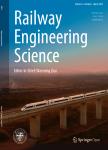Identification of activity stop locations in GPS trajectories by density-based clustering method combined with support vector machines
Identification of activity stop locations in GPS trajectories by density-based clustering method combined with support vector machines作者机构:Department of Civil EngineeringNagoya University Institute of Innovation for Future SocietyNagoya University EcoTopia Science InstituteNagoya University
出 版 物:《Journal of Modern Transportation》 (现代交通学报(英文版))
年 卷 期:2015年第23卷第3期
页 面:202-213页
学科分类:08[工学] 082303[工学-交通运输规划与管理] 082302[工学-交通信息工程及控制] 0823[工学-交通运输工程]
基 金:supported by Grant-in-Aid for Scientific Research(No.25630215 and 26220906)from the Ministry of Education,Culture,Sports,Science,and Technology,Japan the Japan Society for the Promotion of Science
主 题:Activity Stop · Non activity stop · Stopidentification · DBSCAN· Support vector machines
摘 要:The identification of activity locations in con- tinuous GPS trajectories is an essential preliminary step in obtaining person trip data and for activity-based trans- portation demand forecasting. In this research, a two-step methodology for identifying activity stop locations is pro- posed. In the first step, an improved density-based spatial clustering of applications with noise (DBSCAN) algorithm identifies stop points and moving points; then in the second step, the support vector machines (SVMs) method distin- guishes activity stops from non-activity stops among the identified stop points. A time sequence constraint and a direction change constraint are applied as improvements to DBSCAN (yielding an improved algorithm known as C-DBSCAN). Then three major features are extracted for use in the SVMs method: stop duration, mean distance to the centroid of a cluster of points at a stop location, and the shorter of distances from current location to home and to the workplace. The proposed methodology was tested using GPS data collected from mobile phones in the Nagoya area of Japan. The C-DBSCAN algorithm achieves an accuracy of 90 % in identifying stop points in the first step, while the SVMs method is 96 % accurate in distin- guishing the locations of activity stops from non-activity stops in the second step. Compared to other variants of DBSCAN used to identify activity locations from GPS trajectories, this two-step method is generally superior.




